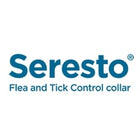
What Are Whipworms in Dogs?
Whipworms, known as Trichuris vulpis, are intestinal parasites commonly affecting dogs. These parasites are named for their whip-like shape, with slender front and thicker back ends. Dogs typically contract whipworms through the fecal-oral route—by licking, eating, or coming into contact with contaminated soil, water, or feces that contain whipworm eggs.
After ingestion, whipworm eggs hatch in the small intestine, where the larvae penetrate the intestinal lining (villi) to grow. This triggers an immune reaction, leading to inflammation that flattens the villi and hinders nutrient absorption. As they develop, the worms move to the large intestine, attaching to the mucous lining and feeding on tissue fluids, potentially causing irritation and, in severe cases, bleeding.
Signs Your Dog May Have Whipworms
Whipworm infections can range from mild to severe. In light cases, symptoms may not appear for months or even years. However, when symptoms do show, they can include:
- increased appetite or weight loss despite a normal
- Soft or bloody stools
- Swollen abdomen and abdominal discomfort
- Lethargy and weakness
- Occasional vomiting
In severe infections, the inflammation caused by whipworms can worsen if another illness weakens your dog’s immune system.
How Do Dogs Get Whipworms?
Dogs can contract whipworms in several ways:
- Ingesting contaminated feces from other infected animals
- Licking or eating contaminated soil, food, or objects
- Drinking or playing in water that contains whipworm eggs
Whipworm eggs are resilient in the environment, making it easy for dogs to become infected during outdoor activities.
Diagnosing Whipworms in Dogs
If your dog shows signs of whipworm infection—such as weight loss, lethargy, or bloody stools—it’s essential to consult a veterinarian. A stool sample analysis is the most common method of diagnosing whipworms. The Veterinarian will examine the sample under a microscope to look for whipworm eggs, which are distinctive but may be present in smaller numbers compared to other parasites.
If the infection leads to significant intestinal inflammation, your veterinarian may suggest an ultrasound for a detailed view of your dog’s intestines. Should the inflammation persist despite treatment, more advanced diagnostic tools like MRI or CT scans may be required for further evaluation.
Treatment for Whipworms in Dogs
Whipworm infections are typically treated with oral anti-parasitic medications such as fenbendazole, milbemycin, or oxantel. It’s important to complete the full course of treatment, even if symptoms begin to improve, to ensure the infection is fully eradicated.
If intestinal inflammation persists, your vet may prescribe anti-inflammatory medications to reduce swelling and help restore nutrient absorption. In severe cases, supportive treatments like IV fluids or iron supplements may be necessary, especially if your dog is anemic or dehydrated.
Recovery and Prevention of Whipworms in Dogs
Most dogs recover from whipworm infections within a few weeks of starting treatment. Maintaining a clean, dry living environment is key to preventing re-infection, as whipworm eggs are vulnerable to drying out and die quickly in dry conditions. Regularly cleaning your dog's bedding, living area, and outdoor spaces will help reduce the risk of recurrence.
During recovery, keep your dog away from other pets and small children to prevent the spread of the parasite. Use gloves and a 10% bleach solution when cleaning contaminated areas to ensure all parasite eggs are destroyed.
By staying vigilant and practicing good hygiene, you can protect your dog from whipworms and keep them healthy and happy.






